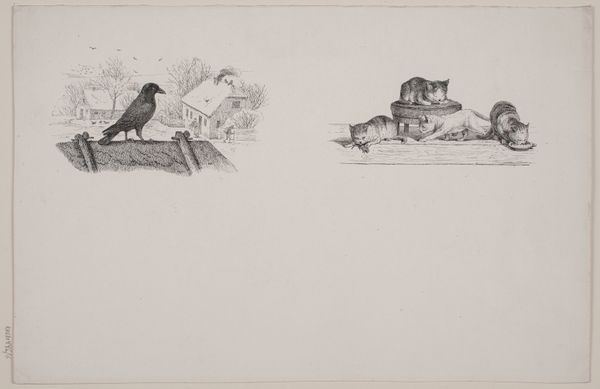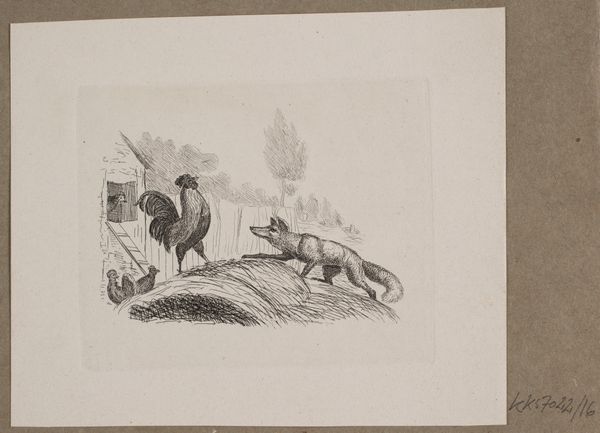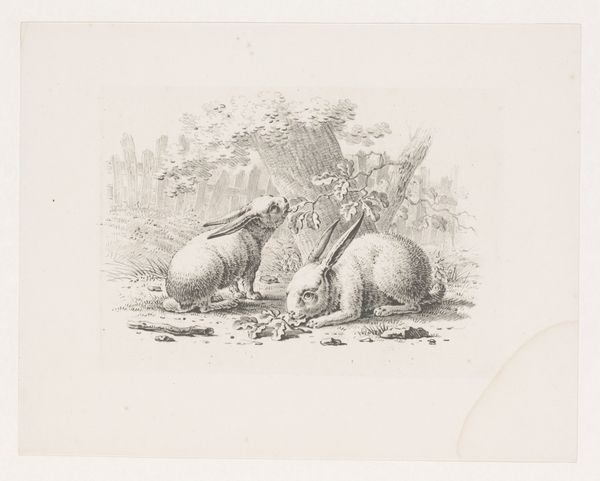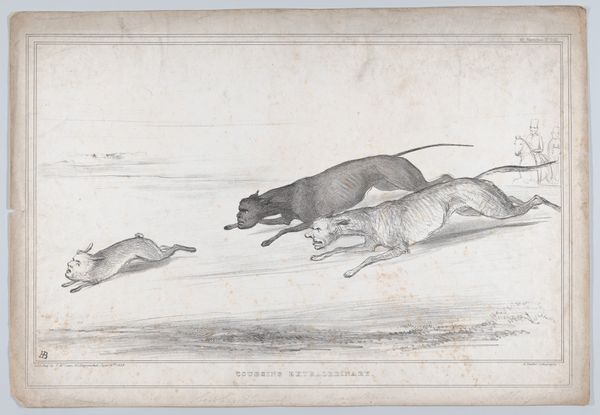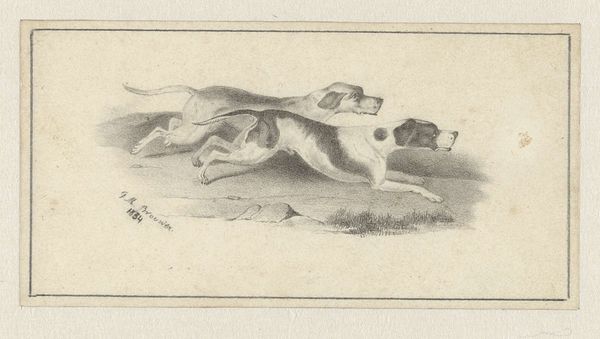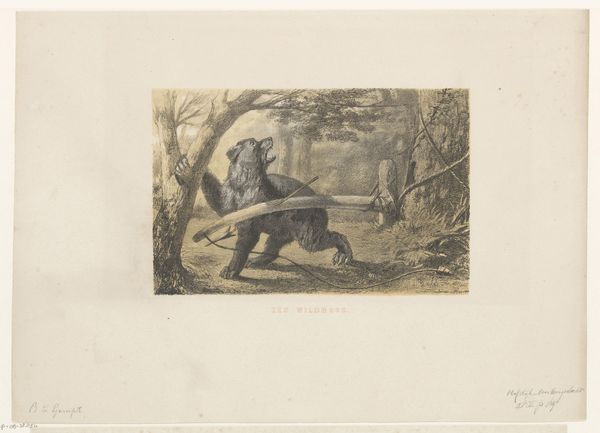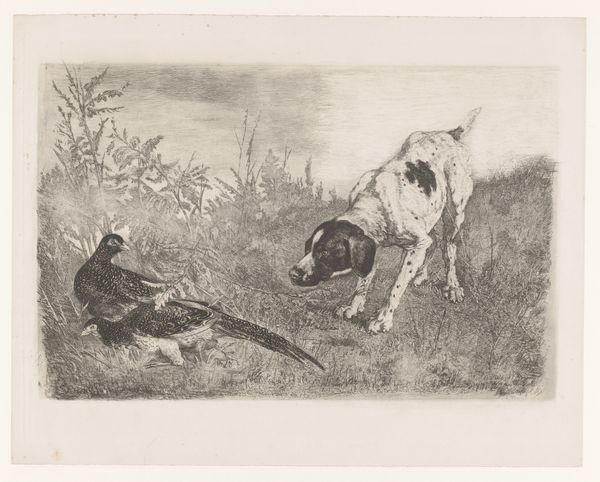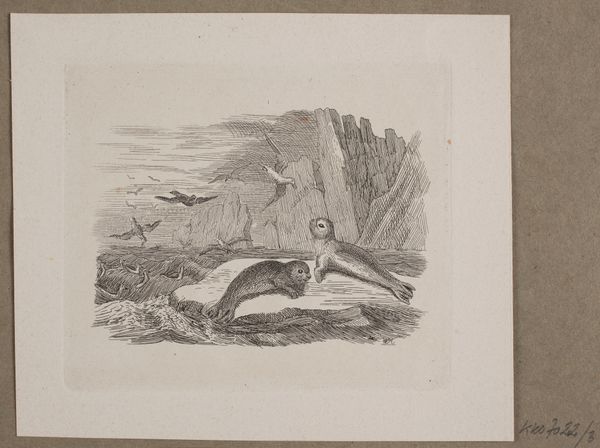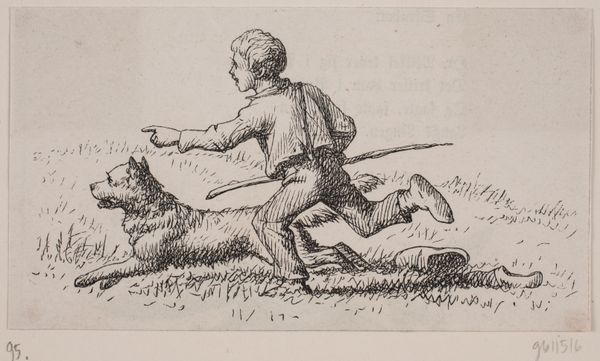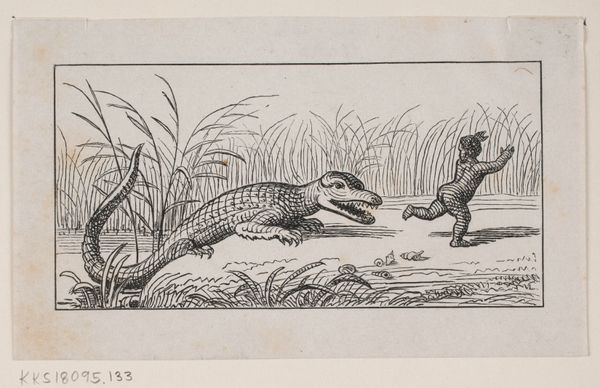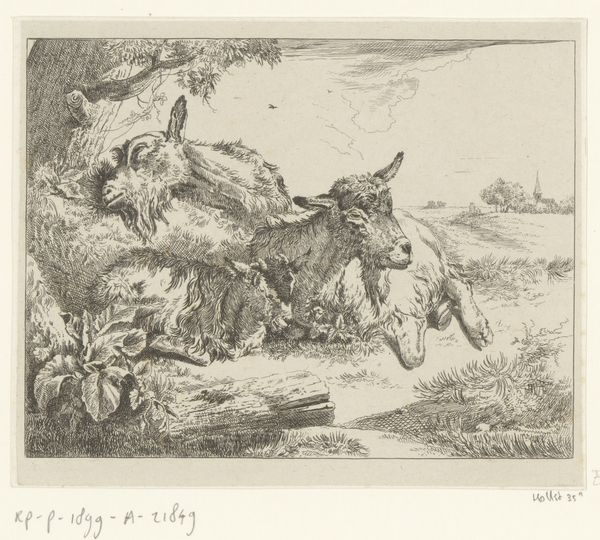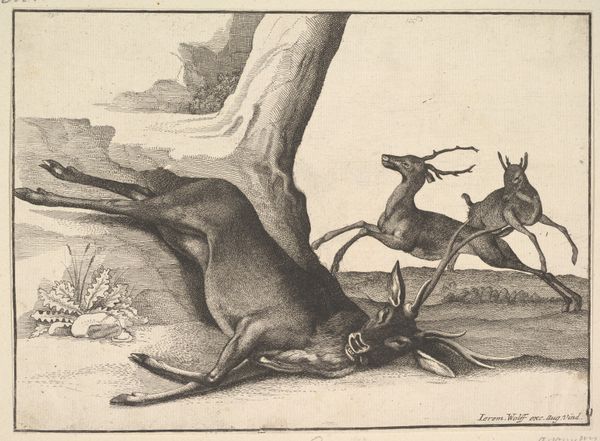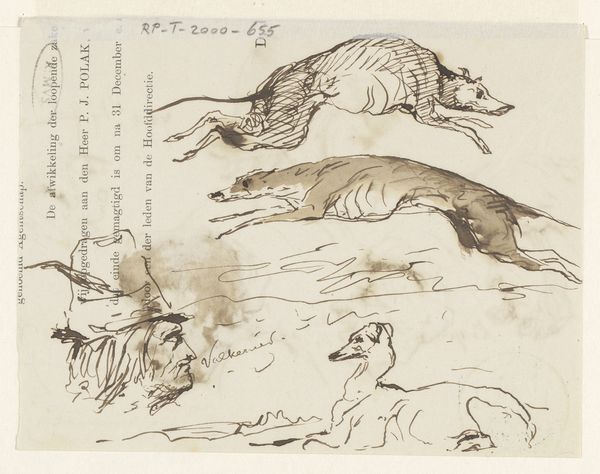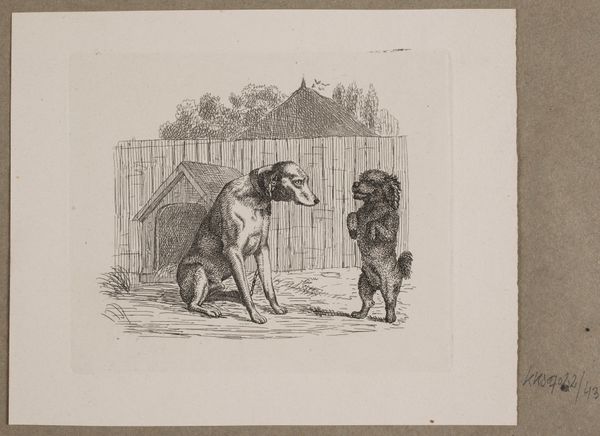
drawing, print, engraving
#
drawing
#
narrative-art
# print
#
romanticism
#
genre-painting
#
engraving
Dimensions: 88 mm (height) x 110 mm (width) (plademaal)
Editor: So, this is Vilhelm Kyhn’s 1838 illustration for O. Specter’s *Fabler for Børn*, done in engraving and drawing. It’s…well, it’s rather charming! A cheeky crow or raven seems to be tormenting a dog near a rural fence. What stands out to you? Curator: The obvious reading is a lighthearted animal fable. But what if we delve deeper into the symbolic language at play? Consider the crow, often a harbinger of ill omen, a liminal creature between worlds. And the dog, representing loyalty and the mundane. Editor: Okay, I see… so the tension is between… worlds? Curator: Precisely. Kyhn sets up a visual opposition. The landscape fades into the distance, grounding the scene. The energetic dog seems confined to the earth, straining toward something just out of reach, while the crow prepares to take flight. The crow has a small white object in its mouth... does this suggest theft? Trickery? Is this simply an animal fable? Or a deeper moral allegory about aspiration versus constraint? Editor: It's interesting how something that seems simple actually holds these potentially contradictory, deeper symbolic layers. Does this kind of interplay of symbols reflect the art world's context in the 1830s? Curator: Absolutely! Romanticism thrived on the symbolic and allegorical. This illustration serves not just to decorate a children’s book, but also to speak to a broader cultural understanding of nature, morality, and human aspiration. The crow has knowledge; the dog is frustrated in its quest to reach upward. Which figure do we identify with, or are we meant to recognize both within ourselves? Editor: I'll definitely have to rethink my initial assumptions about "charming"! Thanks! Curator: The real magic of art, isn't it, revealing what’s hidden in plain sight?
Comments
No comments
Be the first to comment and join the conversation on the ultimate creative platform.
